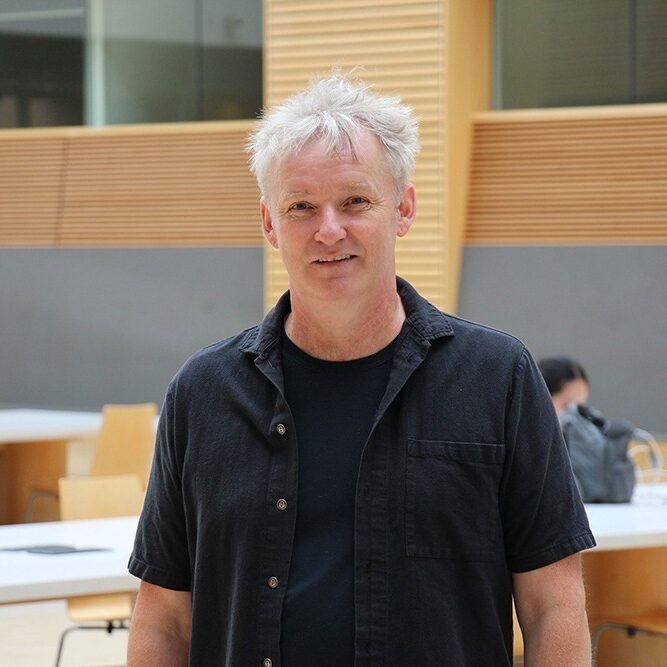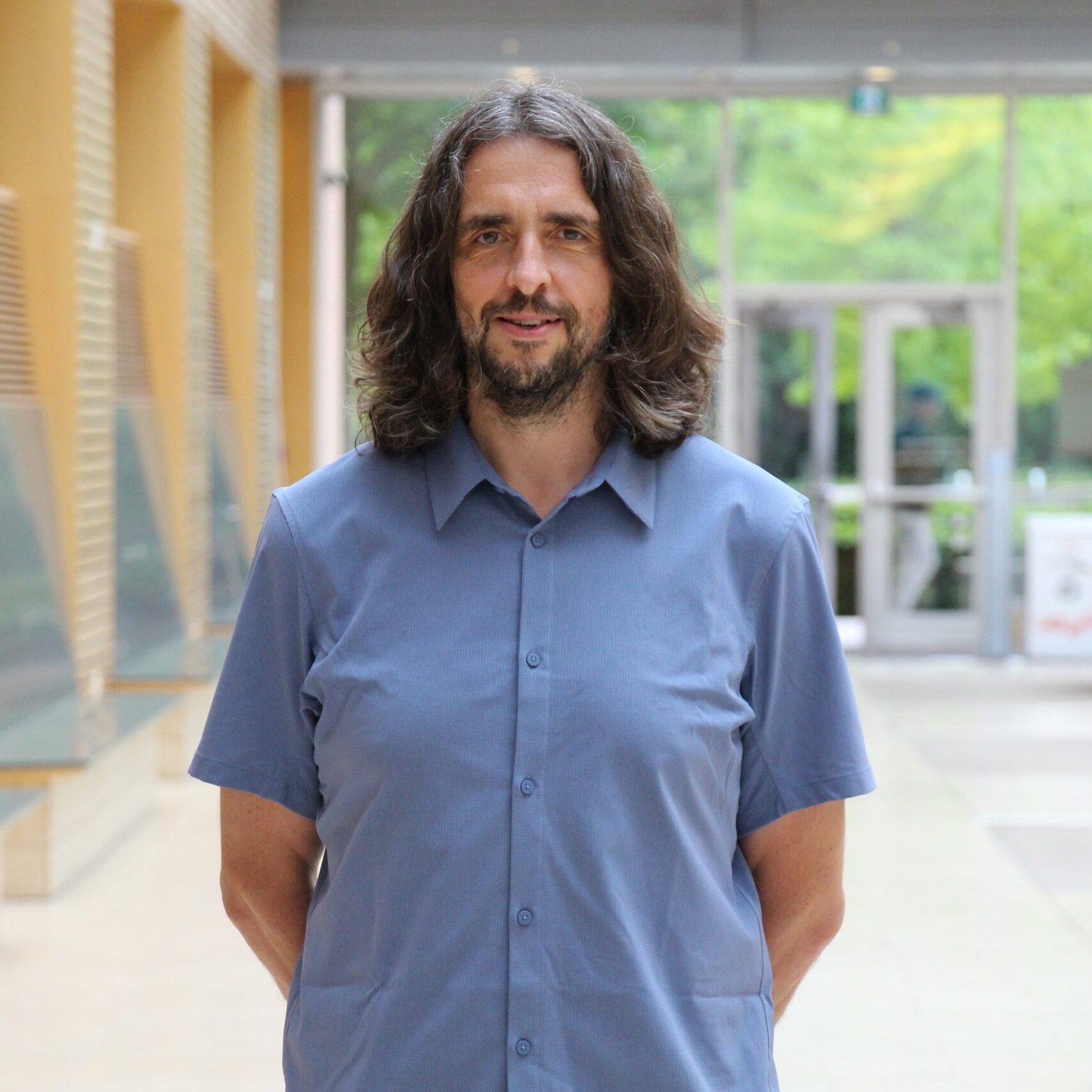LSI researchers awarded funding in Spring 2025 CIHR project grant competition
July 21, 2025
Congratulations to all LSI researchers who received funding through the Spring 2025 CIHR Project Grant competition! A list of PIs and summary of the funded projects is provided below. In total, these grants were awarded > $8.5 M from this competition.
Neurodevelopmental disorders, including autism spectrum disorder (ASD), intellectual disability (ID), epilepsy, and schizophrenia, often involve alterations in the structure and function of neurons (nerve cells), influencing the intricate wiring of the brain. Clinicians treating individuals with these disorders strive to identify the genetic origins so they can comprehend the fundamental pathology and facilitate personalized treatment strategies. ZDHHC8 is a gene that is currently believed to be a potential risk factor for ID, epilepsy, ASD and schizophrenia as there are patients with these disorders that have mutations in this gene. For this reason, it is important to understand how ZDHHC8 regulates the development and function of the brain. Our current proposal aims to understand what ZDHHC8 is doing in neurons and the molecular mechanisms by which ZDHHC8 mediates its functions. This will be done using neurons cultured from the brains of mice as well as mice that lack the ZDHHC9 gene in specific types of neurons. Together, we will determine how ZDHHC8 functions in the brain and what is going awry in the brains of patients who have a non functioning ZDHHC8 gene.

Artem Cherkasov (Vancouver Prostate Centre) and Natalie Strynadka
Co-investigator: David Huntsman, Poul Sorensen
Structure-based design of small molecule inhibitors of the transsulfuration pathway in Ewing Sarcoma
We have recently identified that human protein Cystathionine gamma lyase (CTH) plays key roles in the development of many cancers including Ewing sarcoma, breast, prostate, stomach, bladder, and colon cancers among others. We propose to use sophisticated, AI-driven, computer modelling and X-ray-based structure determination techniques to specifically design drugs which bind to these proteins and prevent their functioning. This will reduce the cancer cells' ability to survive stress, and make the cancers more susceptible to complimentary treatments like chemo- and radiation therapies. This 1-2 punch will provide an extra treatment option, especially for cancers which currently lack any effective treatments like the childhood cancer Ewing Sarcoma. It also could allow for shorter lengths when paired with current chemo- and radiation options in other cancers. Ultimately this may be more effective and have fewer side effects than current treatments.

Edward Conway
Co-investigators: Nathanael Caveney, Jessica Yue
While there have been recent major gains in treating obesity and type 2 diabetes, these medical disorders remain common and are complicated, particularly by an increased risk of heart disease, stroke, and excess blood clotting (thrombosis). The reason for this association is not clearly understood. However such knowledge is important to gain, as it would allow the development of novel strategies to prevent the complications. Working in both the fields of blood clotting and diabetes, our studies show that the key molecules involved in these disorders, i.e., so-called "tissue factor" for blood clotting and the "insulin receptor" for diabetes and obesity, interact with each other. Indeed, in convincing preliminary experiments, we show that tissue factor makes diabetes worse, while the insulin receptor reduces blood clotting. Thus, it appears that they control each other. In this research program, we propose to investigate how these 2 proteins cooperate. We will use many techniques, including 1. growing the relevant fat cells and blood vessel cells in culture systems, 2. using protein chemistry and microscopy techniques to examine affected tissues and cells, 3. performing studies with genetically modified mice that lack one or more of these proteins and treating them with agents that affect blood clotting and/or diabetes, and 4. using sophisticated methods to examine the 3-D structure of the proteins when apart and together, thereby determining precisely where they interact and how one might interfere with the interactions. Overall, our work will result in new information as to how type 2 diabetes, obesity and excess blood clotting are linked. This will hopefully lead to insights toward the design of new preventative and therapeutic strategies for these common medical problems.

Based on our published and preliminary data using both mouse models and humanized mice, we have described the ability of latent gammaherpesviruses, including EBV to modulate the immune response towards pathogenic autoimmune disease. We propose to generate novel human HSC reconstituted humanized mice, infect these mice with EBV, and once latent infection is established, challenge these mice with different autoimmune diseases representative of human disease such as multiple sclerosis, rheumatoid arthritis and psoriatric arthritis. We aim to develop this model to explore the role of latent EBV infection in the initiation of disease when an autoimmune response is prompted by an intrinsic or extrinsic event. The resulting model will be used to determine consistencies or unique EBV-related immune responses affected by differential pathways of autoimmune initiation, and in using humanized mice, we will have the basis of a model to test whether removal of virus alters disease establishment and progression. We propose to administer three different interventions prior to and after latent infection with EBV and examine the effect on autoimmune disease induction. These interventions include Kick and Kill, and CAR-T cell approaches, all of which are used in other infection and cancer models and will be applied here to uniquely remove latent EBV virus.

Our research group established innovative methods for simultaneously testing thousands of drugs to identify drugs that might be useful to protect insulin secreting beta cells in diabetes. One of these screens identified drugs that can protect beta cells from immune attack in type 1 diabetes. The drugs we tested were selected from a library of FDA-approved drugs, meaning that they were already optimized for use in people. We identified a drug called carbamazepine that reduced beta cell death in a type 1 diabetes context. Carbamazepine is an interesting lead compound because it works by inhibiting a specific type of sodium channel, made by the Scn9a gene, but only when they are highly active. This was the first evidence that sodium channels are important in beta cell survival and opened a new area for type 1 diabetes drug development. Importantly, pancreatic beta cells have a specialized complement of sodium channels, meaning that this drug and its derivatives are likely to be relatively beta cell-selective. We confirmed our cell culture data by showing that carbamazepine reduces diabetes incidence in the gold standard NOD mouse model. We also determined that carbamazepine can protect human beta cells in the lab. In the proposed studies, we plan to continue this exciting line of investigation towards a new diabetes drug and answer several key questions that arose from our previous studies. First, we need to understand exactly how carbamazepine and Scn9a affect the activity of the beta cells. Second, we must determine how carbamazepine and Scn9a protect beta cells in the context of type 1 diabetes. Third, we need to study how beta cell sodium channels may modulate local immunity to slow type 1 diabetes. These studies will help us determine whether beta cell sodium channels are a viable therapeutic target in type 1 diabetes.

Periodontitis, or gum disease, is a very common infection of the mouth that causes chronically inflamed gum tissues and tooth loss. Periodontitis also increases the risk for serious diseases such as heart disease and diabetes. During periodontal infection, the immune cells that circulate in our bloodstream release signaling molecules known as cytokines. Some cytokines aggravate disease by driving up inflammation. The goal of this grant application is to study blood platelets, which are normally known as cells that control blood coagulation (clotting). However, platelets also release cytokines that contribute to inflammation. We will focus our studies on a specific cytokine called platelet factor 4 (PF4), and determine exactly how PF4 increases the "inflammatory" behaviour of other cells around the teeth and in the gum tissues. This information will give us a better idea of how platelets drive inflammation and may eventually lead to improved treatments for many chronic inflammatory diseases including arthritis, inflammatory bowel disease and periodontitis.

Janel Kopp
Co-investigator: James Johnson
Hyperinsulinemia in pancreatic cancer progression and mortality
Pancreatic cancer, specifically Pancreatic Ductal Adenocarcinoma (PDAC), is the third leading cause of cancer deaths in Canada. Many individuals with PDAC also experience comorbid conditions like hyperglycemia and insulin resistance, leading to elevated insulin levels in the body. There is growing evidence that increased insulin can make PDAC more aggressive and faster-growing. In addition, insulin acts in cells to stimulate cell programs that are associated with resistance to current treatments, as well as new tumour treatments expected to revolutionize care for patients with PDAC. Current clinical practice does not consider a patients' insulin, nor glucose, levels during treatment unless it impedes their ability to receive treatment. Thus, it is important to understand how different levels of insulin and glucose in patients affect tumour growth and its response to treatment. Our research team has a unique opportunity to address this issue. We have access to clinically relevant patient-derived tumour cells, along with cutting-edge techniques for growing and studying these tumours in the dish and in mice under different insulin and glucose conditions. In addition, because our laboratories are experts in modeling PDAC and metabolic disease, we bring unique perspectives and skills sets to understanding the intersection of these two aspects of human health. Our proposed project aims to improve the current understanding of the interaction between insulin, glucose, and PDAC and if successful will provide the scientific rationale for controlling insulin and glucose levels during treatment.
Surgeries are meant to be procedures that improve or even save lifes. However, complications during surgery can always arise unexpectedly. One such complication arises from the anaesthetics that are being used. Some people are at risk for an event called 'malignant hyperthermia' (MH). They normally don't have any symptoms until they undergo surgery. The anaesthetics used cause a massive rise in body temperature, the muscles become rigid, and the body goes into a hypermetabolic state that usually results in death. The reason for this disease is genetic. Most people susceptible to MH carry a mutation in a gene called 'RYR1'. The gene makes a protein known as the 'Ryanodine Receptor' and it plays a critical role in the contraction of our muscles. Somehow, the anaesthetics and the mutation cooperate: neither alone is enough to cause the protein to malfunction, but the combination of the two is deadly. In this project, we aim to understand how exactly malignant hyperthermia arises, as well as how the protein involved in the disease is being regulated. In particular, we will create very high-resolution 3D structures of the Ryanodine Receptor protein. By comparing the protein from 'normal' people versus people carrying a disease mutation, we will figure out how exactly the mutation alters the 3D structure. We will also look at the effect of various anaesthetics on the 3D structure. Understanding this may pave the way for next-generation anesthetics that no longer have dangerous side effects. Next, we will investigate how exactly the Ryanodine Receptor protein is being regulated. To do this, we will create 3D structures of this protein in complex with another critical muscle protein that we know interacts with it. We will also make use of muscle cell lines to investigate how this regulation works inside cells.

Neurons communicate to other cells via synapses. During development, synapses must grow and establish correct levels of communication. Failure to do so has major implications for neurological and psychiatric disorders during development and maturation. In adulthood, degeneration of synapses underlies many progressive degenerative disorders. Synapses are high energy structures that need a constant supply of bricks (or proteins) to build themselves up, carry out repairs, and adjust to the physiological or traumatic demands placed upon them. To acquire the correct bricks, synapses send requests to the nucleus, which converts the request into the correct set of bricks that the synapse needs. During embryonic and childhood development, these bricks sent by the nucleus are needed to help the synapse grow, establish communication and respond to developmental changes in brain function. In adulthood, these bricks allow synapses to repair and make necessary adjustments to keep the synapse working optimally as demands on the synapse change and the animal ages. Our project aims to uncover how the nucleus converts requests into the right type and number of bricks, and to identify new types of bricks that synapses need. We study this question in motor neurons, which contact muscles to allow us to move and breathe. Our work is relevant to motor neuron diseases, but we expect our work to also provide fundamental understanding of this critical process which occurs in all neurons. Failure of any part of this process is devastating to neuronal health, and underlies many disorders. The Public Health Agency of Canada has reported that neurological conditions affect 3.6 million Canadians, costing billions in direct healthcare and family care costs. Given these statistics, and our inability to effectively treat most of these disorders, it is critical that we make headway in understanding such fundamental processes as studied here that are required for neuronal function.
Latest News

UBC scientists discover “distress signal” cells use when their power supply is failing
December 18, 2025

UBC researchers uncover how statins harm muscles—and how to stop it
November 26, 2025

UBC enzyme technology clears first human test toward universal donor organs for transplantation
October 8, 2025

UBC launches world’s first mushroom-powered, waterless toilet with help from Hallam Lab
October 2, 2025

Dr. Kayla King awarded Royal Society’s Francis Crick Medal
September 16, 2025

Dr. Emilia Lim investigates wildfire smoke’s health toll with Genome BC funding
September 9, 2025

Dr. Steven Hallam named 2025 UBC Wall Research Award recipient
September 8, 2025

Dr. Yossef Av-Gay’s team reveals 70-year-old Parkinson’s drug’s promise against Tuberculosis
August 29, 2025

Building an inclusive TA training program in the life sciences
August 25, 2025

LSI researchers awarded funding in Spring 2025 CIHR project grant competition
July 21, 2025

Dr. Jayachandran Kizhakkedathu awarded New Frontiers in Research Fund – Exploration Grant
July 14, 2025

LSI researchers awarded funding through NSERC grants
July 11, 2025

Dr. Ivan Robert Nabi awarded Distinguished Achievement award by the UBC Faculty of Medicine
June 24, 2025

Dr. Douglas Allan Receives co-funded grant from Alzheimer Society and Brain Canada
June 20, 2025

LSI researchers receive national recognition for stem cell innovation
June 20, 2025

